Over the years, I’ve seen more than half of the forklifts on rough job sites fail—not because they were poorly built, but because they were the wrong type for the ground.
Standard forklifts1 fail on rough ground due to poor traction, low ground clearance, unsuitable tire patterns, ineffective torque transfer, weak slope stability, limited maneuverability, and excessive wear in harsh conditions. These are structural limitations—not issues that maintenance alone can fix.
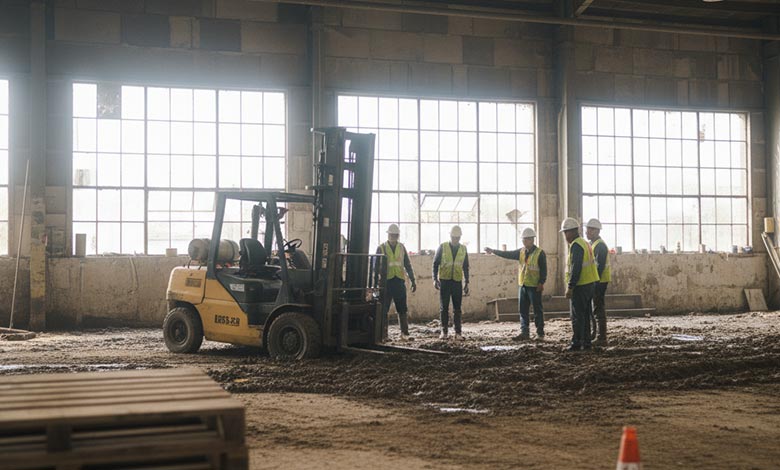
Let me walk you through 25 failure scenarios I’ve repeatedly witnessed, along with the insights behind them.
Why Are Standard Forklifts Almost “Destined” to Fail on Rough Ground?
Many people assume a forklift can work anywhere, but standard forklifts are essentially indoor machines—they struggle the moment they leave smooth concrete.
Standard forklift tires, chassis, driveline, and steering systems are designed for indoor environments. On mud, gravel, grass, or soft soil, these design features quickly turn into weaknesses.

-
Indoor forklifts vs. outdoor terrain: fundamentally different design goals
I often explain to customers:A warehouse forklift is an indoor tool—not an all-terrain machine.
Its tire pattern, chassis design, and axle strength were never meant for rough ground. -
Why do they instantly struggle outdoors?
- Soft ground → wheels sink
- Mud blocks tire grooves → traction disappears
- Low chassis → frequent bottoming out
- 2WD → torque easily wasted
This is not “bad luck.” It’s a mismatch between equipment and terrain.
- Terrain compatibility table
| Scenario | Standard Forklift Performance | Root Cause |
|---|---|---|
| Indoor floors | Excellent | Designed for it |
| Mud / rough ground | Frequent bogging | Insufficient traction |
| Gravel slope / dirt hill | Wheel slip | Torque not delivered |
| Soft soil / grass | Hard to move | High ground pressure |
And that circles back to Insight 2: People often don’t realize standard forklifts weren’t built for terrain work.
Why Do Standard Forklifts Slip, Sink, and Get Stuck in Mud?
I’ve seen countless forklifts start slipping within minutes on muddy ground. In most cases, the issue isn’t power—it’s traction.
Mud failures come from clogged tire treads, high ground pressure, lack of self-cleaning, and 2WD driveline limits. The longer a standard forklift runs in mud, the worse traction becomes.

-
Warehouse tire treads become useless in mud Warehouse tires have shallow, closely spaced grooves.
Once packed with mud, those grooves disappear—and so does traction. -
Traction matters far more than horsepower Many operators blame “insufficient power,” but in my experience:
The engine is fine—the ground simply can’t accept the torque.
On rough terrain, tires matter more than horsepower. -
Why does the machine sink deeper the longer it runs?
- Treads don’t self-clean
- Low ground bearing capacity
- 2WD offers limited real traction
- Weight is concentrated on small contact patches
This creates a vicious cycle: slip → sink → stall → shutdown.
- Mud-related failure table
| Problem | Cause | Result |
|---|---|---|
| Slipping | Mud-blocked treads | Wheels spin |
| Bogging | High ground pressure | Sinking |
| Sinking deeper | No self-cleaning | No escape |
| Can’t climb | Insufficient traction | Repeated stalling |
Why Do Standard Forklifts Bottom Out So Easily?
A standard forklift’s ground clearance is simply too low—this is one of the most predictable failure modes I’ve seen on job sites.
Low chassis height makes forklifts vulnerable to rocks, ruts, roots, and uneven ground. Once the belly contacts the ground, the drive wheels often lift partially off the surface, eliminating traction.
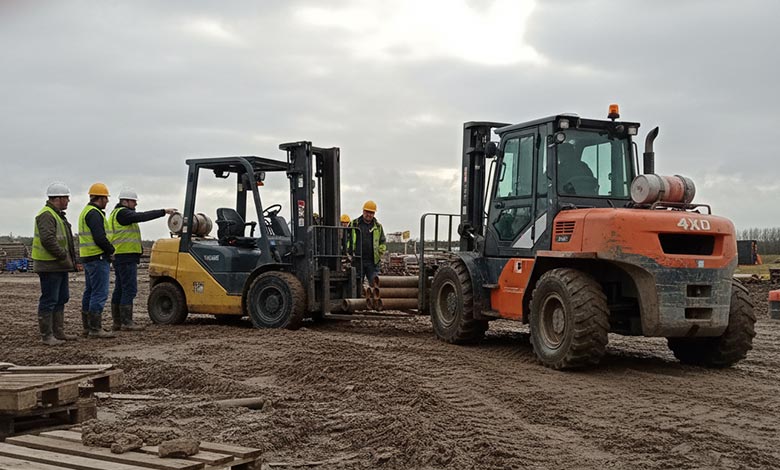
- Low ground clearance is an indoor advantage—but an outdoor flaw
Warehouse environments reward:- Low center of gravity
- High stability
- Precise pallet alignment
But outdoors, this same design guarantees bottoming out.
-
Why is bottoming out inevitable?
Outdoor terrain is unpredictable:
rocks, bumps, holes, roots, ditches—standard forklifts simply can’t clear them. -
What happens when the machine bottoms out?
- Zero forward motion
- Requires towing or lifting to recover
- Undercarriage damage
- Driveshaft and axle risks
-
Bottoming-out table
| Issue | Cause | Effect |
|---|---|---|
| Belly hang | Low clearance | Wheels lift |
| Undercarriage hits | No protection | Damage |
| Wheel unloading | Uneven terrain | Lost traction |
| Structural stress | Repeated impacts | Cracks / failures |
A low chassis is “born incompatible” with rough terrain.
Why Do Standard Forklifts Perform Poorly—and Dangerously—on Slopes?
Slopes expose every weakness a standard forklift has. I’ve witnessed failures from stalling to sliding to tipping.
Standard forklifts1 lack torque reserve, slip easily, have long braking distances, and carry forward-biased weight. These factors make uphill, downhill, and slope turning extremely risky.
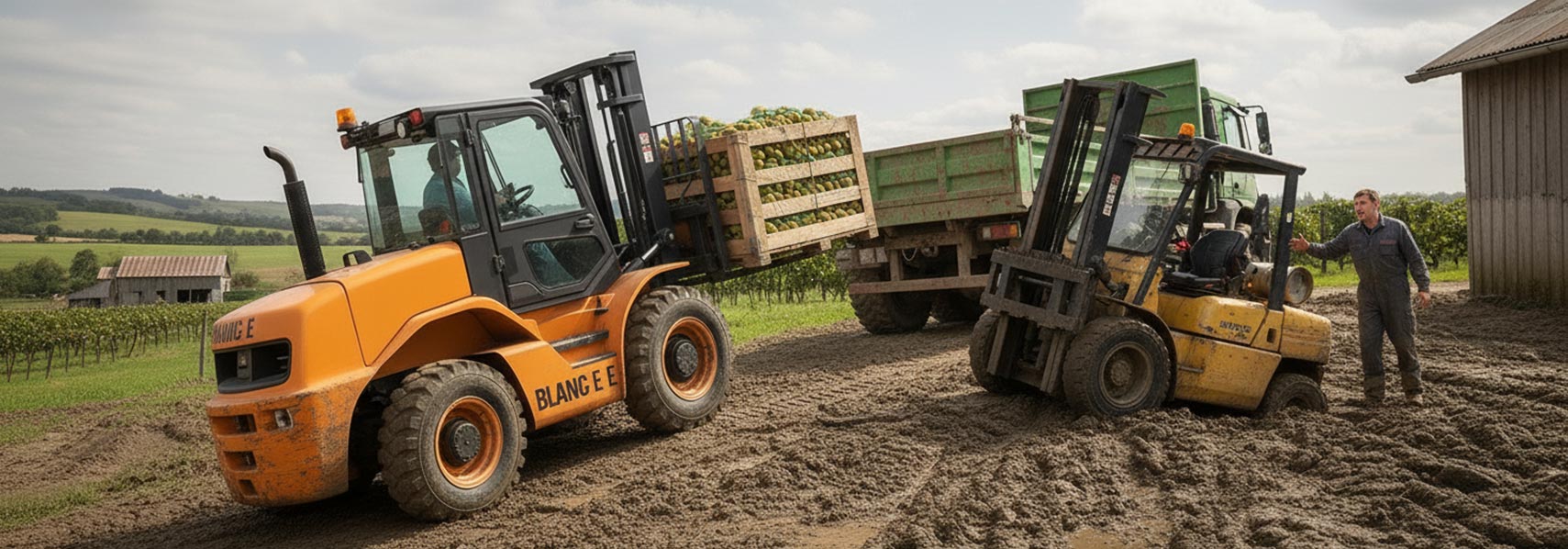
-
Lack of climbing ability isn’t an engine issue
With 2WD forklifts, torque often never reaches the ground:- Inside wheel slips
- Outside wheel spins
- Load increases torque loss
- Only one wheel effectively drives
-
Downhill braking is inconsistent
Wet or gravel slopes drastically increase stopping distance.
I’ve personally seen forklifts slide far beyond safe limits. -
Lifting on a slope is the most dangerous scenario
Standard forklifts carry weight forward.
Raising a load on a slope exponentially increases tipping force. -
Slope performance table
| Problem | Real Cause | Risk |
|---|---|---|
| No climbing power | Torque loss | Stalling |
| Sliding downhill | Low traction | Loss of control |
| Tip-over risk | Forward CG | Overturn |
| Hard to steer | Large radius | Collision risk |
Why Are Standard Forklifts Extremely Inefficient in Tight Outdoor Spaces?
In tight outdoor areas, I’ve seen standard forklifts shuffle back and forth multiple times just to make a single turn.
Large turning radiuses, tall mast height, limited visibility, and sensitive steering make standard forklifts poorly suited for tight, uneven outdoor job sites.
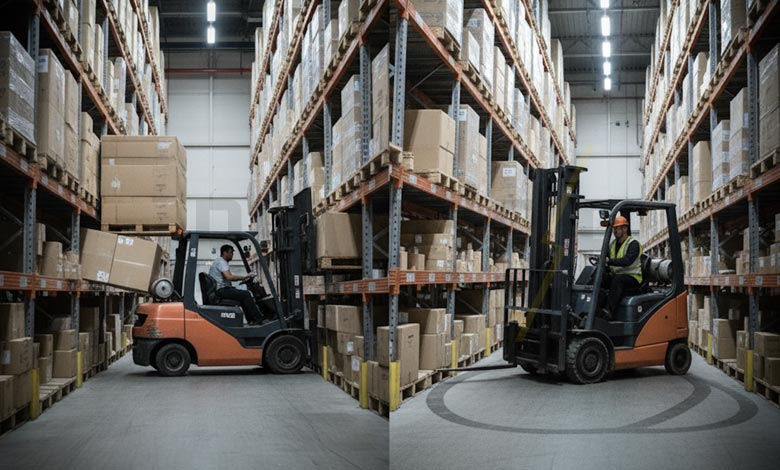
-
Large turning radius is a built-in limitation
Designed for wide warehouse aisles, not rugged job sites. -
Height prevents access to many work areas
Basements, low sheds, steel frames—standard forklifts simply can’t enter. -
Uneven ground disrupts steering
Bumps and holes cause the steering wheel to jerk unpredictably. -
Tight-space table
| Issue | Standard Forklift Behavior | Result |
|---|---|---|
| Turning difficulty | Large radius | Low efficiency |
| Height restriction | Cannot enter | Limited access |
| Unstable steering | Rough ground | Collision risk |
| Frequent reversing | Tight spaces | Safety issues |
Why Does the Wrong Forklift Choice Multiply Risks and Costs?
Many accidents I’ve seen weren’t caused by driver error—the forklift simply wasn’t suited for the terrain.
A mismatched forklift increases safety risk, reduces productivity, and causes excessive downtime and indirect costs. A simple job becomes complicated and expensive.

-
Risks compound rapidly
Mud + slope + rain = the perfect scenario for failure. -
Efficiency drops sharply
Operators are forced to “try, reverse, try again,” slowing the whole site. -
Costs climb without warning
Maintenance + delays + labor losses → far more expensive than buying the right machine. -
Risk-cost table
| Dimension | Impact | Example |
|---|---|---|
| Safety | Tip-over risk | Slope lifting |
| Efficiency | Slow maneuvering | Narrow sites |
| Cost | Frequent repairs | Axle, tires |
| Downtime | Missed deadlines | Stuck machine |
Why Does a Standard Forklift Become More Expensive the Longer It Works on Rough Ground?
I’ve seen many sites end up saying: “We spent more repairing the forklift than buying it.” The reason is simple: wrong application. =
On rough ground, standard forklifts suffer excessive tire wear, undercarriage impact, driveline stress, and hydraulic overheating. Costs escalate rapidly.
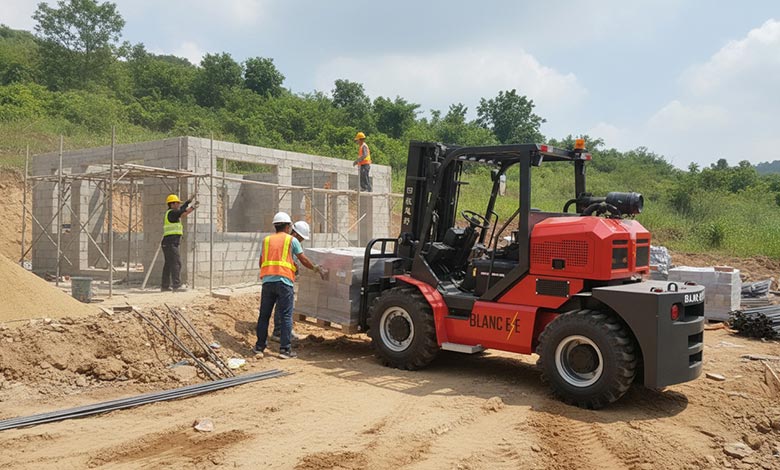
-
Tires wear out shockingly fast
A warehouse tire can lose half its tread in one day on gravel. -
Undercarriage takes constant hits
Low clearance + uneven ground = continuous damage. -
Hydraulics and axles run at extreme loads
Low-speed, high-resistance conditions generate dangerous heat and stress. -
Cost structure table
| Component | Overload Cause | Result |
|---|---|---|
| Tires | Wrong tread | Frequent replacement |
| Undercarriage | Hard impacts | Cracks / deformation |
| Axle & diff | Torque shock | Failures |
| Hydraulics | High temperature | Leaks / breakdown |
Why Is a Rough Terrain Forklift Not an Upgrade—but a Necessity?
Many think a rough terrain forklift is a “nice upgrade,” but from what I’ve seen, it’s a necessity for harsh job sites.
Rough terrain forklifts offer high ground clearance, deep-tread tires2, 4WD traction3, reinforced axles, and better stability—allowing safe, efficient operation on terrain where standard forklifts simply cannot work.
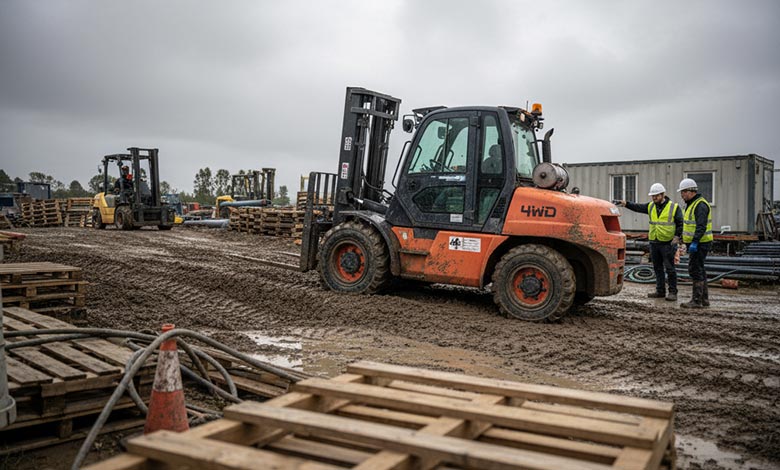
-
It’s not luxury—it’s proper matching
Many customers told me after switching:“I finally realized I’d been using the wrong machine.”
-
The engineering differences are fundamental
- Deep, self-cleaning treads
- Large contact patches
- Reinforced chassis
- 4WD torque distribution
-
Usability depends on matching—not specs (Insight 12)
Specs matter, but terrain compatibility4 matters more. -
Comparison table
| Metric | Standard Forklift | Rough Terrain Forklift |
|---|---|---|
| Traction | Weak | Strong |
| Ground clearance | Low | High |
| Tire pattern | Smooth | Deep tread |
| Driveline | 2WD | 4WD |
| Terrain compatibility | Indoor | Outdoor rough |
| Stability | Limited | Excellent |
Summary
After years of seeing forklifts fail across different job sites, one truth stands out: equipment doesn’t fail because it’s bad—it fails because it’s in the wrong environment. Match the forklift to the terrain, and most “problems” disappear instantly.
Understanding the limitations of standard forklifts can help you choose the right equipment for your job site. ↩
Learn how deep-tread tires improve traction and performance on uneven surfaces. ↩
Discover how 4WD traction can enhance forklift performance in challenging conditions. ↩
Understanding terrain compatibility can help you select the right forklift for your needs. ↩
